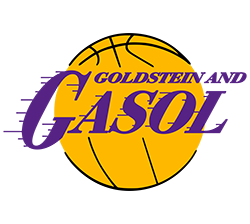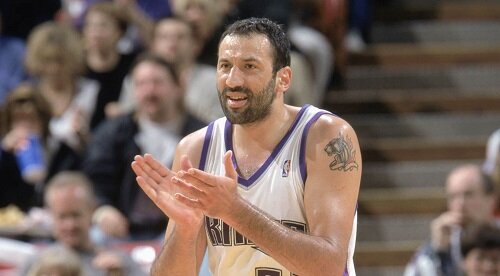Game 28: Gene Tormohlen - Julie's Candy Dills
Three-quarters of the way through the 1989 NBA Playoffs, it looked like Pat Riley’s prediction of a three-peat was coming true. The Lakers swept the Blazers, Sonics, and Suns -- the first time a team had won their first 11 games in the playoffs -- and were set for a Finals rematch against the Detroit Pistons. But Byron Scott suffered a severe hamstring injury hours before game 1. Then in game 2, Magic Johnson also pulled his hamstring, essentially knocking him out of the series. The Lakers were swept by the Bad Boy Pistons in four games and a 42 year old Kareem Abdul-Jabbar made good on his promise to retire.
That meant the Lakers would somehow have to find a replacement for the greatest center of all time in the late stage of the NBA draft, the 26th overall pick to be exact. There were two options. One was Gary Leonard from the University of Missouri, a 7’1” giant who averaged 10.4 points and 5.5 rebounds per game his senior season. The other was Vlade Divac, a Serbian from Yugoslavia who had soft hands and a silver medal from the 1988 Olympics. Divac spoke no English, had military service looming, and, oh yeah, was never seen in person by any of the team’s scouts. So you can’t blame longtime Laker scout Gene Tormohlen from recommending Leonard over Divac. According to Jeff Pearlman’s Showtime, Tormohlen said “I told Jerry [West] I was scared. The bottom line is, if every team knew how good Vlade Divac, why was he still there [late in the draft]?”
With minutes remaining to make their pick, West called Jerry Buss. The owner and semi-professional poker player told his GM to gamble and so they did, selecting the 21 year old Divac as the Lakers’ giant hope to remain dominant as Magic Johnson and James Worthy entered their 30s. Divac (pronounced DEE-vots) did end up becoming integral to multiple championships for the Lakers. It’s just that he helped out by being on the other team.
-----------------------
Born in 1968 in the small town of Prijepolje, Divac left his family at 12 to attend a prestigious basketball academy. But by the time he was winning medals at the Olympics, his home country of Yugoslavia was on the brink of civil war. Divac was extremely lucky to have been drafted just before his country was torn apart by war and genocide, but the conflict had an immediate impact on his life. His close friend, former teammate, and fellow 1989 draft pick Drazen Petrovic, a Croatian, stopped talking with him after the break-up of Yugoslavia. As documented in the excellent ESPN 30 for 30 Once Brothers, the 1993 death of Petrovic in a car crash before they could settle their differences still haunts Divac to this day.
Despite the darkness emanating from Divac’s home country on the other side of the world, the 7 foot Serbian brought a new levity to the Lakers. Reeking of cigarettes (he was a notorious chain smoker) and only owning one suit, Divac quickly grew accustomed to his new sunny home, even if he had to use a translator for several years. In L.A., the new center became a fan favorite for high-fiving celebrities mid-game and appearing in goofy Schick commercials where he shaved off his signature black beard. The LA Times even called him the ‘90s version of Fernando Valenzuela.
While Divac was a solid player who averaged a double-double by his 4th year as a starter, his development was limited by the players around him. Divac was supposed to keep Showtime going well into the ‘90s. But after the Lakers’ 1991 Finals loss to the Bulls, Magic retired after contracting HIV and Worthy’s knee surgery spelled a slow end to his career. It was clear to management that Divac was never going to be the next great Laker center after Mikan, Wilt, and Kareem. That was especially true when Orlando Magic superstar Shaquille O’Neal made it known that he wanted to play under the game’s brightest lights.
So that leads us to Vlade Divac’s integral role in helping the Lakers win three championships while not wearing purple and gold. In 1996, the Lakers desperately wanted to unload Divac’s contract in order to free up space to sign Shaq. So West orchestrated a deal with the Charlotte Hornets, who lost Alonzo Mourning but were still looking to compete, to trade whomever the Lakers told them to select for Divac. And as fate would have it, enough teams passed on the high-risk, high-reward high schooler Kobe Bryant that he was available for the Hornets to pick upon West’s command. Divac initially threatened to retire, but both teams were relieved when the big man finally came to terms that his time in L.A. was over. Not too long after, Shaq signed with the Lakers. Divac spent a couple of solid, but unmemorable years in Charlotte before signing with the Sacramento Kings, where he and his new team cemented the Divac for Kobe transaction as one of the NBA’s most lopsided trades.
Divac could’ve changed basketball history had he stood firm and retired, but it’s doubtful Divac was ever serious about quitting the game he loved at 28. That’s how Divac set into motion the Lakers’ 2000-2002 dynasty, one that came at the expense of his Kings in the playoffs each title-winning year. In 2000, the Lakers smacked the Kings in five games. In 2001, the Lakers took care of business with a semifinals sweep. But 2002 is the year Divac literally handed the Lakers a victory that saved their hopes of a threepeat.
Down in the series 2-1 and losing in the final seconds of Game 4 of the Western Conference Finals, the Lakers were on the verge of having to win three straight games against Sacramento. The Lakers were down by two points on the final possession. Divac defended Shaq under the basket as Robert Horry passed to Kobe at the top of the key. Kobe immediately attacked, forcing Divac to come off Shaq. The Kings center rose high enough to alter the shot, which missed badly, barely hitting the rim and bouncing straight to Shaq. The Big Aristotle had a point blank lay-up, but Divac somehow spun around quickly enough to leap up and force Shaq to miss. In what should have been the final moment in a masterful display of defense -- the kind that would lead Divac’s future Hall of Fame highlight reel or the Kings’ championship DVD -- Divac grabbed the rebound with his right hand and threw it away from the basket… straight to Horry, still standing at the top of the key.
With his buzzer beating three pointer, Robert Horry officially became Big Shot Rob. The Lakers tied the series, then won the series, and then won the threepeat clinching title that Pat Riley promised a decade earlier. In the post-game comments, a bitter Divac told reporters “Anybody could’ve made that shot. It was a lucky shot. That’s all.”
That was the closest Divac ever got to winning a championship. Those early-mid 2000s Kings teams never again got past the second round. Divac played one more year for the Lakers, then retired from back problems. He joined the team as an international scout, but retired before the Lakers won again in 2009. And now as the helpless and totally out of his element general manager of the Kings, he is fully in control of the most hapless franchise in the Pacific Division. Whether he’s allowing himself to be traded, passing the ball to the other team, or declining to draft Luka Doncic, Divac just can’t help himself from helping the Lakers win.
----------------------
Julie’s Candy Dills
48-ounce jar dill pickles
1 tablespoon celery seed
1 tablespoon mustard seed
½ cup vinegar
4 cups sugar
Drain pickles. Slice or quarter lengthwise and put in a large bowl. Add remaining ingredients and allow to stand for 24 hours. Return to jar and refrigerate. Delicious with sandwiches or chopped up in chicken, tuna, or potato salad.
One of the only times my mom made me feel like an abject dumbass as a child was when we were at Vons and I asked her where pickles came from. I was 12 and definitely too old to not know that pickles were pickled cucumbers and not salty, slimy, briny vegetables that came dilled straight out of the ground. Later in 2010, when an episode of Keeping Up With the Kardashians featured a very “Is Chicken of the Sea chicken or fish?” moment where Kim asked the same question as I did, I felt much better about myself. If America’s most famous person of the 2010s didn’t know the answer, why should I have?
Anyway, this recipe was ridiculously expensive and disgusting. The tiny containers of celery seed and mustard seed, which will probably remained untouched until the day my grandchildren clear out my kitchen, cost $15 total. And even though I cut the amount of sugar by 1 cup, marinating pickles in 3 cups of sugar after they’ve already been brined in salt is an ungodly concoction. What the hell were Americans thinking in the 1980s?
Health concerns aside, the pickles were awful. The celery aftertaste counters the salty sweetness in each bite, resulting in a pickle that just tastes like celery. Besides, I’m trying to watch my sodium intake now that kidney stones are something I have to deal with. I even made the hard choice to stop regularly keeping a jar of kosher pickles in my fridge at all times. That’s a very hard decision for a Jew to make. But I also hate wasting food that I bought and prepared… So I have a feeling I’m going to be found on my hands and knees like Ginny Sack, scrounging for my hidden, sugary, celery-flavored pickles hidden underneath the sink.














